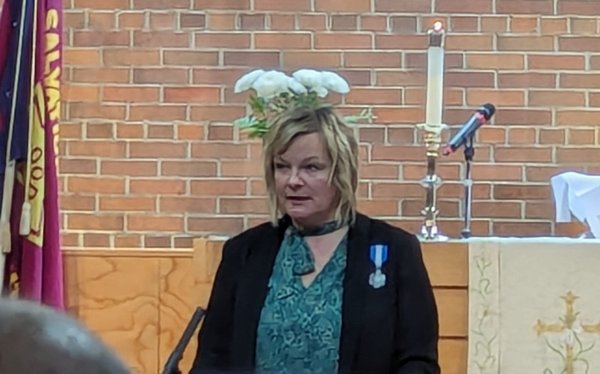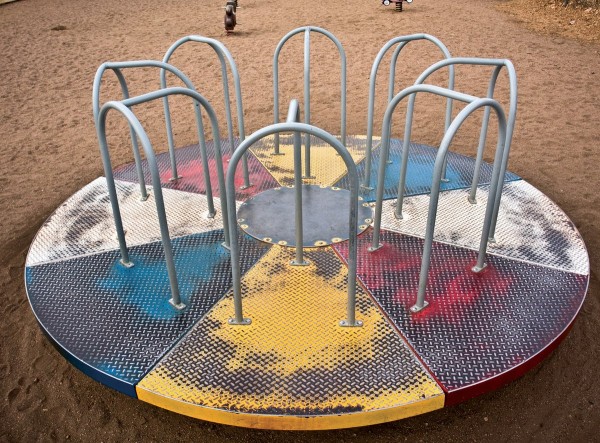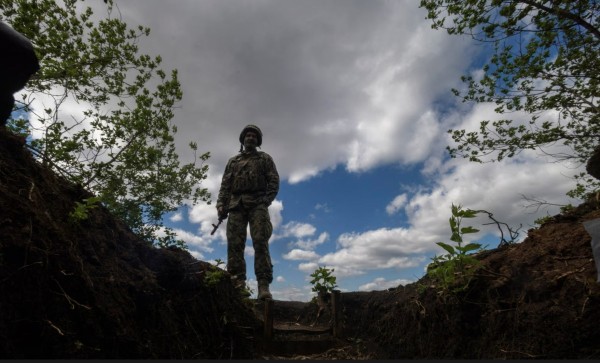H. KASEKAMP
For us Estonians our War of Independence of 1918-1920 is the single most important event in our history. Without it, it is doubtful that we would exist as a nation to-day. Historian Hannes Walter points out, in the epilogue for the latest edition of “Vabadussõda 11”, that it was not only essential to our survival as a nation but it also had international implications. “To the bolsheviks we were only a way-station on the road to Berlin, to the heart of Europe.”
As Latvia faltered, Estonia stood its ground and threw the Red Army back beyond our borders, and in doing so it also played a crucial part in the liberation of Latvia against both our common historical enemies, Germany and Russia.
What does Latvia, — or our other neighbours and the rest of the world know of this remarkable event? Everyone knows about the Finnish Winter War or the Hungarian Revolution of 1956 and other such events where a courageous small nation was pitted against a much larger aggressor. Was the Estonian War of Independence not as remarkable, interesting and awe inspiring as the above mentioned events?
A Canadian high-school textbook describes the events in the Baltic States after World War I thus... “the Baltic States, that Germany had wrestled from Russia, also became independent”... end of story.
Margaret McMillan, a prominent Canadian historian and author, in her recent important book on the Versailles Treaty — “Paris 1919”, pays thorough attention to the convention and its aftermath, but devotes only one sentence to Estonia. On page 223 — “In April they (the Germans) overthrew the Latvian government and headed into Estonia even though the Bolsheviks were withdrawing.”
The Canadian historian of Latvian decent, Modris Eksteins, in his book “Walking since Daybreak” comments on German conflict with Estonia and the Ulmanis Latvians under Estonian command — “Latvian forces with the help of Estonians forced them (Germans) to withdraw”. So much of our glorious battle of Võnnu (Cesis).
Another Canadian historian of Latvian decent Andrejs Plakans in his “The Latvians — A Short History”, on page 119, states that in late spring of 1919 the German and Latvian forces in joint operations, pushed the Bolshevik armies into easternmost Latvia. Not a word about Estonians or the “Landeswehr War” or the battle of Võnnu (Cesis), which had even greater importance to Latvia than Estonia. The author does not seem to know that the only well-organized major force loyal to the Ulmanis government at this time was the North-Latvian Brigade, trained and equipped in Estonia and under the Estonian command.
The Baltic German historian Georg von Rauch, in his “The Baltic States — the Years of Independence”, comments on (page 62) the re-taking of Riga from the Bolsheviks, on May 22, by a German-Latvian force, as having international significance in saving Europe from the Bolsheviks — “and it should be remembered in this connection that the “Miracle on the Vistula”, which thwarted Moscow's plans for the “Bolshevization of Poland”, was preceded by the “Miracle on the Daugava” on May 22, 1919. Von Rauch must have forgotten that his “Miracle on the Daugava” was preceded by the “Miracle at Kehra”, some 4 1/2 months earlier and that the Estonian forces had by the spring crossed the border to Latvia and threatened to cut off the Bolsheviks in western Latvia.
Two books by British naval officers are interesting, informative and suspenseful reading, but while very sympathetic to our cause, fail to mention the scope and even the basic facts of land operations in this war. The books, “A Baltic Episode” by commander (then Lieutenant) Augustus Agar and “Cowan's War” (in Estonian “Balti mere vabastamine") by Admiral Geoffrey Bennet. Agar and Cowan, both great heros of our War of Independence, but how many Estonians know their names? One searches in vain for any mention of Agar's name or the crippling of the Bolshevik navy in that incredible British naval and air attack on Kronstadt harbour in our volumes of “Eesti Vabadussõda 1918-1920”.
In the “History of Finland” by John Wuorinen — Columbia University Press 1965, — we can not find “Estonia” in the index. The annexation in 1940 is briefly mentioned under Baltic States. No word on our War of Independence or the role Finland played in it. The reference to the Finnish-Soviet peace treaty at Tartu uses Dorpat, the German name for the city, with no explanations as to where that Dorpat might be located.
An 1935 issue of the Finnish military journal “Soumen Sotilas” with the focus on the years 1917-19 was devoted to the Latvian war of Independence. In it the Estonian role in Latvia is almost totally ignored and many historical facts were either twisted or totally falsified. In the Estonian military publication „Sõdur” of November 1935 issue, Estonian General N. Reek writes a detailed commentary on the before mentioned “Soumen Sotilas” article. He was 2nd in command to General Põdder during the Landeswehr campaign, and by some accounts was the main architect of our victory at Võnnu (Cesis). His article “Ajalugu vajab tõsiasju” (History needs facts), should be required reading for both Latvians and Estonians, clarifying the situation in northern Latvia in the first half of 1919.
It was in Finland's interest to have a friendly, democratic state at the south shore of the Bay of Finland and similarly it was in Estonia's interest to help Latvia establish a free and friendly country to the south of us. Finland's help to Estonia is well known and acknowledged. The importance of the Estonian role in the liberation of Latvia in 1919 is sadly only barely acknowledged by non-Estonians, if at all.
In modern times Estonia and Latvia and all their other neighbours around the Baltic Sea, save Russia, have enjoyed civilized relations, in spite of many potential conflicts of interest points. Compare that with the Balkans! Can anything be gained now by bringing up the past? Should we let the “sleeping dogs lay?” But how would other nations respond if the histories of their finest hours were distorted or ignored by others?
1919 is not ancient history. Not many years ago there were still many Latvians and Estonians alive, even here in Canada who had participated in Latvian liberation.
There is still much evidence from that time so that establishing basic facts should not be difficult. However before criticizing others, the Estonians should take a critical look at our own history textbooks and correct any inaccuracies or omissions regarding our allies in that era. Are the contributions of the British, the Baltic Germans, the White Russians, Latvians and others who fought bravely on our side properly acknowledged by us? As General Reek said in 1935 “History Needs Facts”. I think the importance of Estonian sacrifices and achievements should be made known outside our borders. The memory of young men who made the supreme sacrifice in that conflict demands no less. We should be able to achieve this without an ugly confrontation with our friends, neighbours and allies.
In order to understand what happened in 1944, one has to know 1918-1919. The Kremlin, of whatever colour, has always tried to stick the fascist label on us and we have had only modest success in fighting it even though unlike most European countries, we never had a credible fascist movement in Estonia. The western countries have seen nothing wrong in supporting a despotic Soviet regime and giving them half of Europe, plus half of Korea to boot. Was all that necessary to defeat Hitler? We should boldly pursue the truth.
Our story is a remarkable and inspiring one, and one that history should not forget.
Our War of Independence as seen by our neighbours and allies (3)
Archived Articles | 01 Dec 2006 | EL (Estonian Life)EWR
Viimased kommentaarid
Kommentaarid on kirjutatud EWR lugejate poolt. Nende sisu ei pruugi ühtida EWR toimetuse seisukohtadega.
I was surprised that some of the Estonian republic generation were hostile to my comments on Artur Sirk, the demagogue, who was assassinated as a national enemy.
Shortly I will publish an eyewitness account of the inept fascists, who lead the Vapsid movement.
Larka was a simpleton in the political context to align himself, with one of the "kaikamehed'.
if you see some street thugs beating up a Jew, would you join them, if you are born after 1980 (collapse of Communism).
If the answer is in the affirmative, then you are classifying yourself alongside the neo-fascists and that gives the neo-stalinists a perfect excuse to agitate for your removal. By whom? Mother Russia, of course!
In response to whether Hitler would have saved Estonia, you need to read the policy documents for the population movements that Himmler was to initiate for the resettlement of the Germans, the Estonians were to be moved north, they were to be replaced by the Dutch and Germany was to expand to incorporate Holland populated by 100 % Germans.
So that gives you an idea of the value Hitler placed in fellow fascists. What am I going to do about the people who were angered by the ridiculing of Sirk?
Shortly I will publish an eyewitness account of the inept fascists, who lead the Vapsid movement.
Larka was a simpleton in the political context to align himself, with one of the "kaikamehed'.
if you see some street thugs beating up a Jew, would you join them, if you are born after 1980 (collapse of Communism).
If the answer is in the affirmative, then you are classifying yourself alongside the neo-fascists and that gives the neo-stalinists a perfect excuse to agitate for your removal. By whom? Mother Russia, of course!
In response to whether Hitler would have saved Estonia, you need to read the policy documents for the population movements that Himmler was to initiate for the resettlement of the Germans, the Estonians were to be moved north, they were to be replaced by the Dutch and Germany was to expand to incorporate Holland populated by 100 % Germans.
So that gives you an idea of the value Hitler placed in fellow fascists. What am I going to do about the people who were angered by the ridiculing of Sirk?
I am inclined to go along with Peter's argument, since a lot of facts have emerged concerning President Päts. It must not be forgotten that as a young lawyer in the mid 1920's with a fluent grasp of Russian, he was asked to (and accepted) to lead a Russian Import firm in Estonia, receiving a handsome salary in return (some 4,000 kroons). It is presumed that Päts' friendship and trust of the Russians began at this time, and his Orthodox faith simply softened the final blow both to Päts personally and Estonia as a nation. In due course he also started the Harju Pank of Estonia which assisted General Franco's Government during the 1930's. Larka was simply short-shrifted because he could have strongly undermined Päts personal interests, as history records a continuing trust of the Russians (on the part of Päts) up to and including Estonia's capitulation to Soviet forces. The only recompense that Päts supporters can come up with is the fact that at least loss of life was kept at a minimum. But I also believe that Larka could and should have won those fateful elections of 1934, and maybe we wouldn't have had to put up with Soviet occupation in the first place.
The statement that Estonia never had a credible fascist movement is not true. The Vabadussõjalaste Liit was one of the most popular policical movements in Estonia in the 1930s. Their candidate, Larka, would have been elected president in a free election but Päts with the help of Laidoner declared a dictatorship to stop the VL from taking power. Larka and other VL leaders were imprisoned or exiled to Kihnu after they tried to take power in their own counter-coup. Larka's important role in the War of Independence was then totally erased from the history books.
Some older Estonians I have spoken to believe that with Larka as president, Germany would not have allowed the USSR to ocupy Estonia as the country would have been seen as an ally.
Some older Estonians I have spoken to believe that with Larka as president, Germany would not have allowed the USSR to ocupy Estonia as the country would have been seen as an ally.
Archived Articles
TRENDING




















